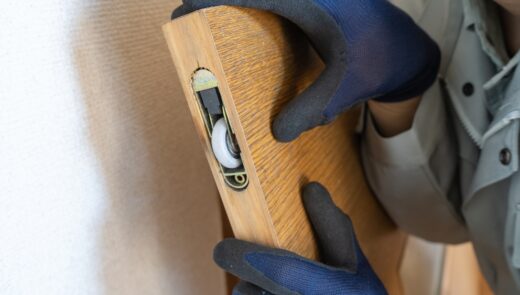If opening your flyscreen door feels more like dragging a brick along concrete, chances are you don’t need a whole new door. It’s likely the rollers that are causing all that hassle. Over time, these little wheels can wear out, break, or get clogged with dirt, making fly screen door roller replacement a must.
Replacing those rollers is a quick and easy fix. These tiny plastic wheels do all the heavy lifting—literally—and when they go, so does your door’s easy movement. A little tune-up by replacing the wheels can completely transform how your flyscreen door operates.
Note: Before jumping straight into replacement mode, it’s a good idea to check the track and give the wheels a quick clean/adjustment, as this may be the only fix you need.
Tools Needed for Replacing Door Rollers
You’ll need some tools at the ready when it comes time to adjust sliding door rollers:
- Someone to help lift the door
- Philips head screwdriver
- Flat head screwdriver
- Cloth
- Hammer
- Needle-nose pliers
Guide on Replacing Flyscreen Door Rollers
Most modern security screen doors and flyscreen doors can be removed from their track by loosening the roller screws, which are usually located at the top and bottom of the door. Follow these steps to replace the rollers:
- Use a Philips head screwdriver to turn them anti-clockwise and retract the wheels.
- Once retracted, with the help of a friend, lift the door off the track and lay it flat in a safe spot.
- Inspect the rollers—if they’re bent or broken, it’s time to replace them.
- With a flathead screwdriver, find the tabs on either side of the roller carriage.
- Press down on the tabs while gently pulling the carriage out. Keep these old carriages handy to match them with your new ones.
- Measure your existing carriage and roller to find the correct match.
- Insert the new roller carriages, ensuring the tabs click back into place.
- Retract the rollers again so you can easily reattach the door to its track.
Before reattaching the door, clean the tracks again to remove any dirt. With your friend’s help, lift the door and place it back onto the track. Use the screwdriver to lower the rollers by turning the screws counterclockwise, ensuring the door aligns properly.
Maintenance tips for flyscreen door rollers
To keep your fly screen doors rolling smoothly, build a little bit of regular maintenance into your cleaning routine. The frames on fly screens are often powder-coated, but dirt, dust, and pollutants will still accumulate over time, especially in coastal or industrial areas.
- Wipe down the frame with a wet sponge every six months (or more frequently if you live in an area with higher pollution) to remove any loose dirt.
- Use a soft brush and a mild detergent to scrub off any stubborn dust, salt, or grime on the track. Avoid harsh chemicals, as to not damage the finish.
- Finish by drying the frame with an absorbent cloth to avoid unsightly watermarks.
Your fly screen mesh can also collect dust and debris, so give it a bit of attention during your cleaning routine. The best way to clean the mesh is with a soft-bristled brush or the furniture brush attachment on your vacuum cleaner. Gently run it over the mesh to remove any build-up without causing damage.
Important: When cleaning your fly screen, avoid using steel wool or scouring pads on the frame or mesh, as they can permanently damage the surface. Stick to soft brushes and non-abrasive cleaning solutions to keep your fly screen looking and functioning like new.
Frequently Asked Questions
Can you replace flyscreen door rollers?
Yes, and this can often be an easier fix instead of replacing the entire door. Swapping out the rollers is a more cost-effective and straightforward solution. Most rollers can be easily replaced by removing the door from its track, swapping out the old rollers for new ones, and reattaching the door.
How to adjust sliding patio door rollers?
Most sliding doors have adjustable screws in the bottom corners. These screws control the height of the rollers, allowing you to raise or lower the door for better alignment. To adjust, use a screwdriver to turn the screws and adjust until the door sits evenly on the track and glides effortlessly when opened or closed.




